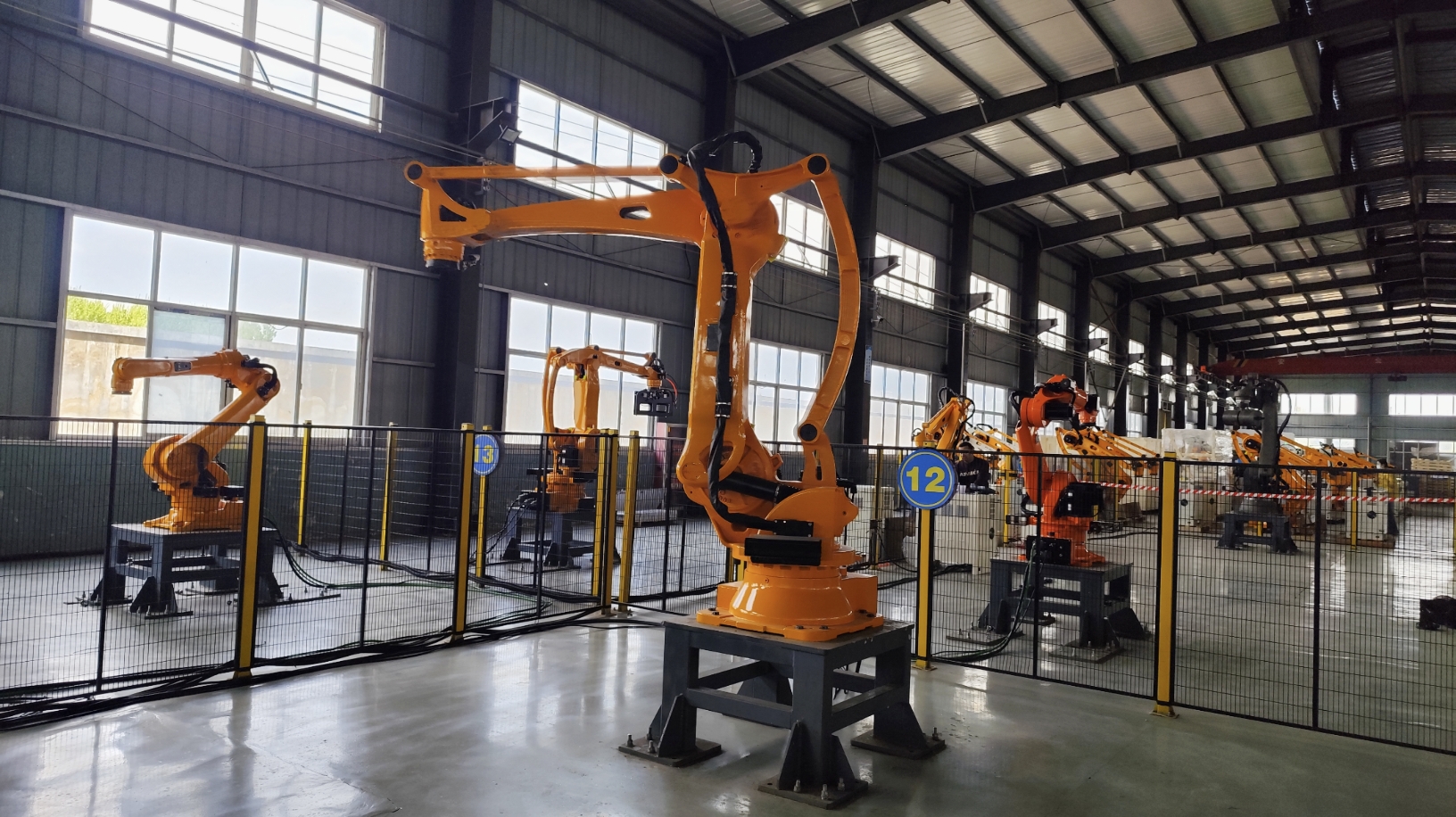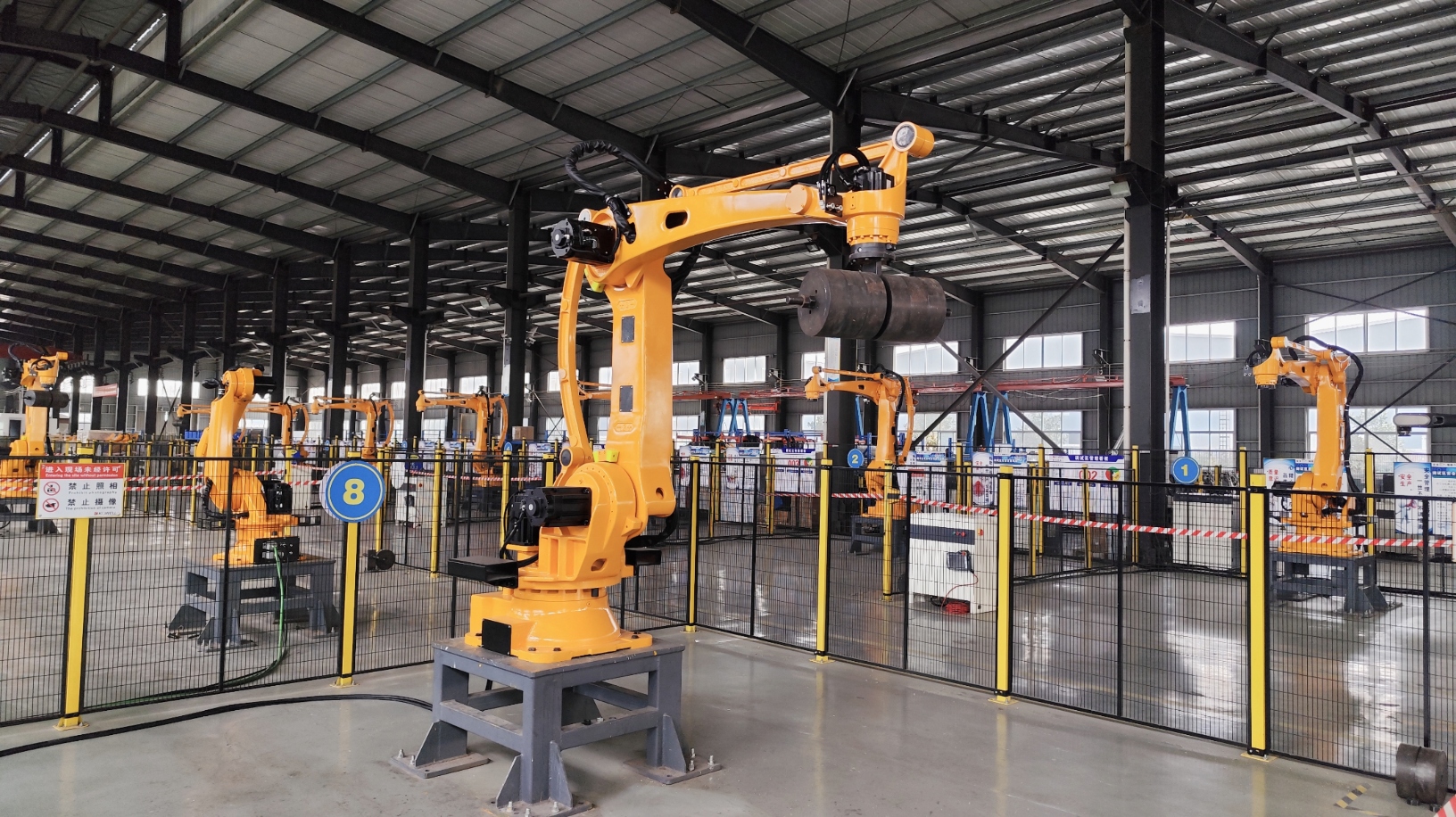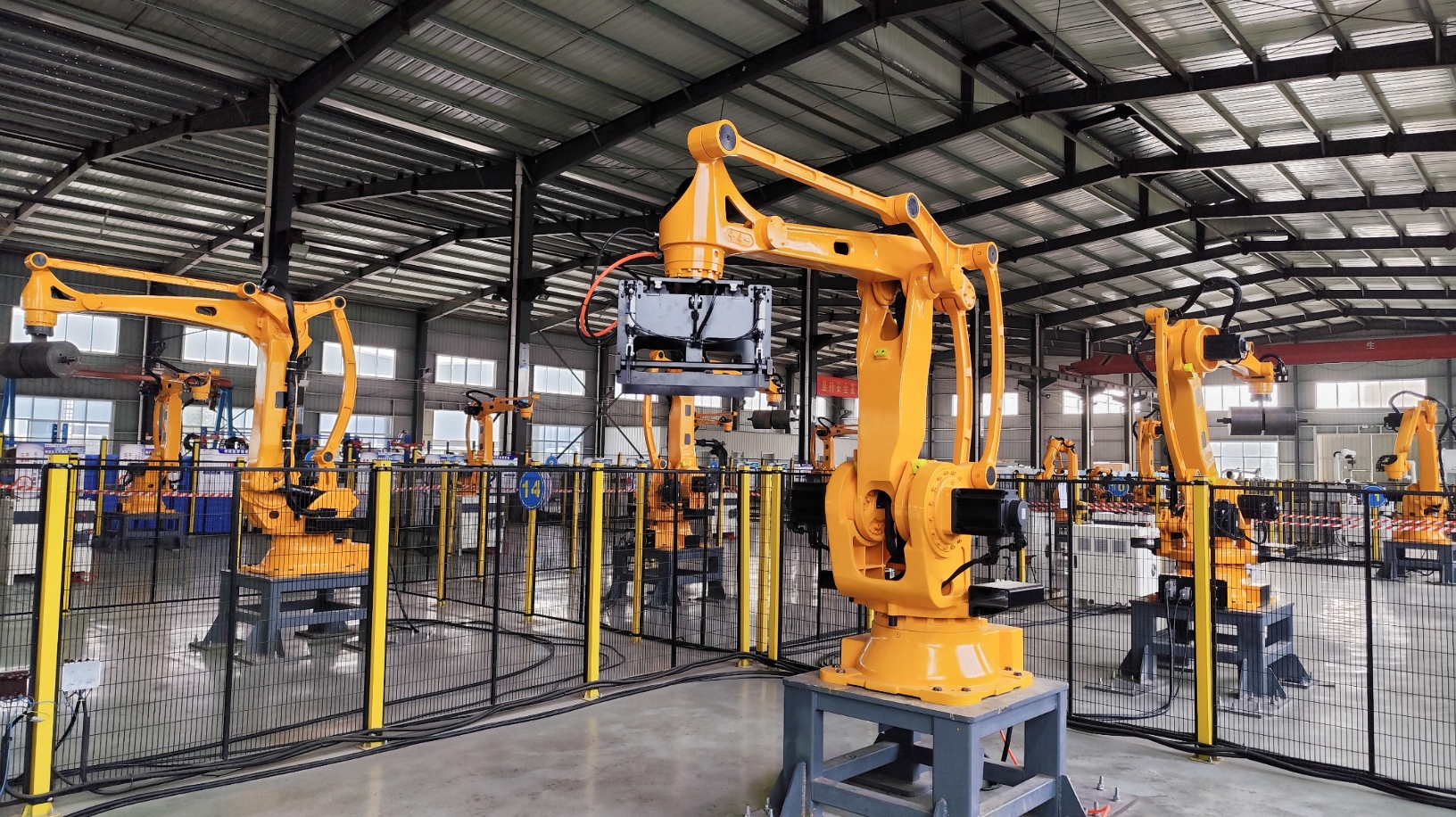In the automated production model, palletizing robots play an important role. As an indispensable part of the manufacturing industry, they are widely used in various fields. In order to improve the efficiency of production lines and reduce labor costs, as well as improve product quality and avoid human errors, many companies have added palletizing robots to meet the needs of mass enterprises.
This article will analyze the important role and challenges of palletizing robots in the current manufacturing industry from the perspectives of their development history, existing application fields, and future development trends.
1. Development History of Palletizing Robots
Palletizing robots appeared in the 1980s. Early palletizing robots were mainly used for simple stacking tasks. Their mechanical arms and grippers were simple in structure and cumbersome to operate. With the continuous advancement and development of robot technology, palletizing robots have gradually developed in the direction of multi-function, high efficiency and intelligence.
1.Initial stage (1980s-1990s)
In the 1980s, industrial robots began to be used in the production lines of some companies, and palletizing robots were also introduced into major production lines during that period. At that time, palletizing robots had a single function and could only be used for simple object handling and stacking. The control system was also relatively simple and the level of intelligence was low, so they were not widely popularized at that time.
2.Development stage (2000s)
After the 21st century, sensor technology and industrial automation technology have been developed, and the performance of palletizing robots has also been improved. Breakthroughs in technical fields such as visual systems and control systems have enabled palletizing robots to identify and grasp objects more accurately and efficiently. At the same time, many palletizing robots have also begun to be equipped with better grippers, which can grasp the corresponding objects more stably and improve production efficiency.
3.Intelligent stage (2010s to present)
In recent years, with the rapid development of technologies such as AI, big data, and the Internet of Things, palletizing robots have become a member of intelligent manufacturing in the Industrial 4.0 era. Today's palletizing robots can palletize and transport with high accuracy, and can also use various technologies for autonomous optimization and analysis, making them smarter and more efficient. The addition of collaborative palletizing robots has also further improved flexible production.
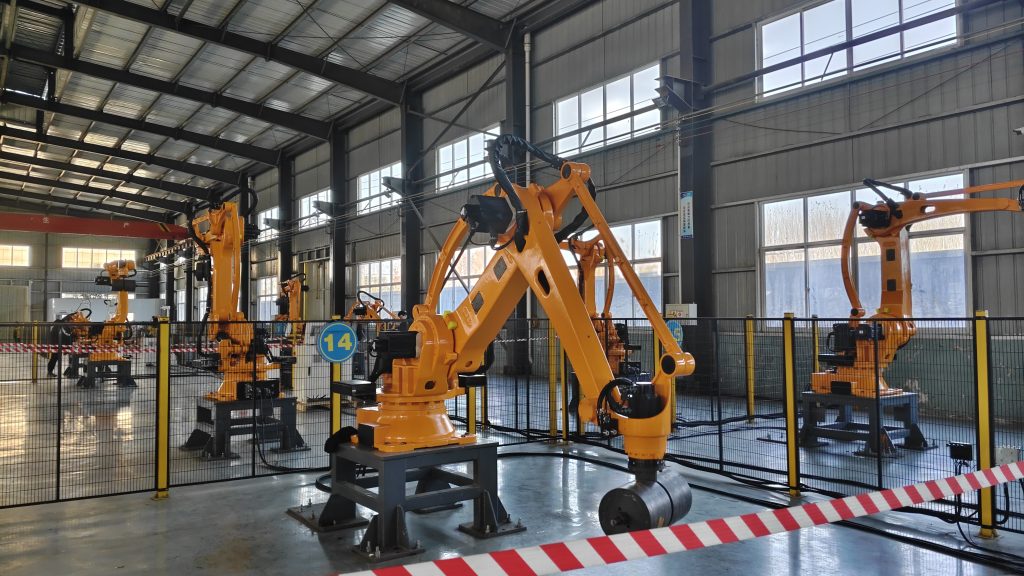
2. Technical challenges faced by palletizing robots
1.Poor adaptability to complex environments
Most palletizing robots today are suitable for relatively regular shapes and relatively hard objects. It is difficult to adapt to relatively fragile, large and irregular objects. This requires that in the future, palletizing robots need to have stronger adaptability to cope with complex working environments.
2.Difficulty of multi-task collaborative work
Usually, as a member of an automated production line, palletizing robots need to coordinate and cooperate with other industrial robots and automated equipment, including sometimes cooperating with operators. This requires that in the future, palletizing robots should have stronger collaborative capabilities to improve the production efficiency of the entire production line.
3.Cost and investment issues
For some small and medium-sized enterprises, the initial investment cost for robots is relatively high. The initial purchase and subsequent equipment maintenance and upkeep are a considerable expense. Therefore, reducing the cost of industrial robot production while ensuring performance is also a concern in the robotics field today.
3. Future development trend of palletizing robots
1.More intelligent
AI technology is also continuously improving. In the future, palletizing robots will be deeply integrated with AI technology. Industrial robots will have stronger autonomous learning capabilities and can cope with more different scenarios and handle exceptions. Collaboration will also be smoother, achieving win-win cooperation between man and machine.
2.Flexible production
Flexible production, as a major trend in the manufacturing industry, occupies a favorable position in the flexible production system. In the future, palletizing robots need to be able to handle the palletizing of multiple types of products and can quickly switch according to the adjustment of work tasks.
Conclusion
As an important member of the manufacturing industry, palletizing robots have occupied a favorable position in the current era of Industry 4.0. I believe that in the near future, with the development and progress of various technologies, palletizing robots will be more intelligent and efficient, which will bring greater productivity improvement and a wider range of applications.
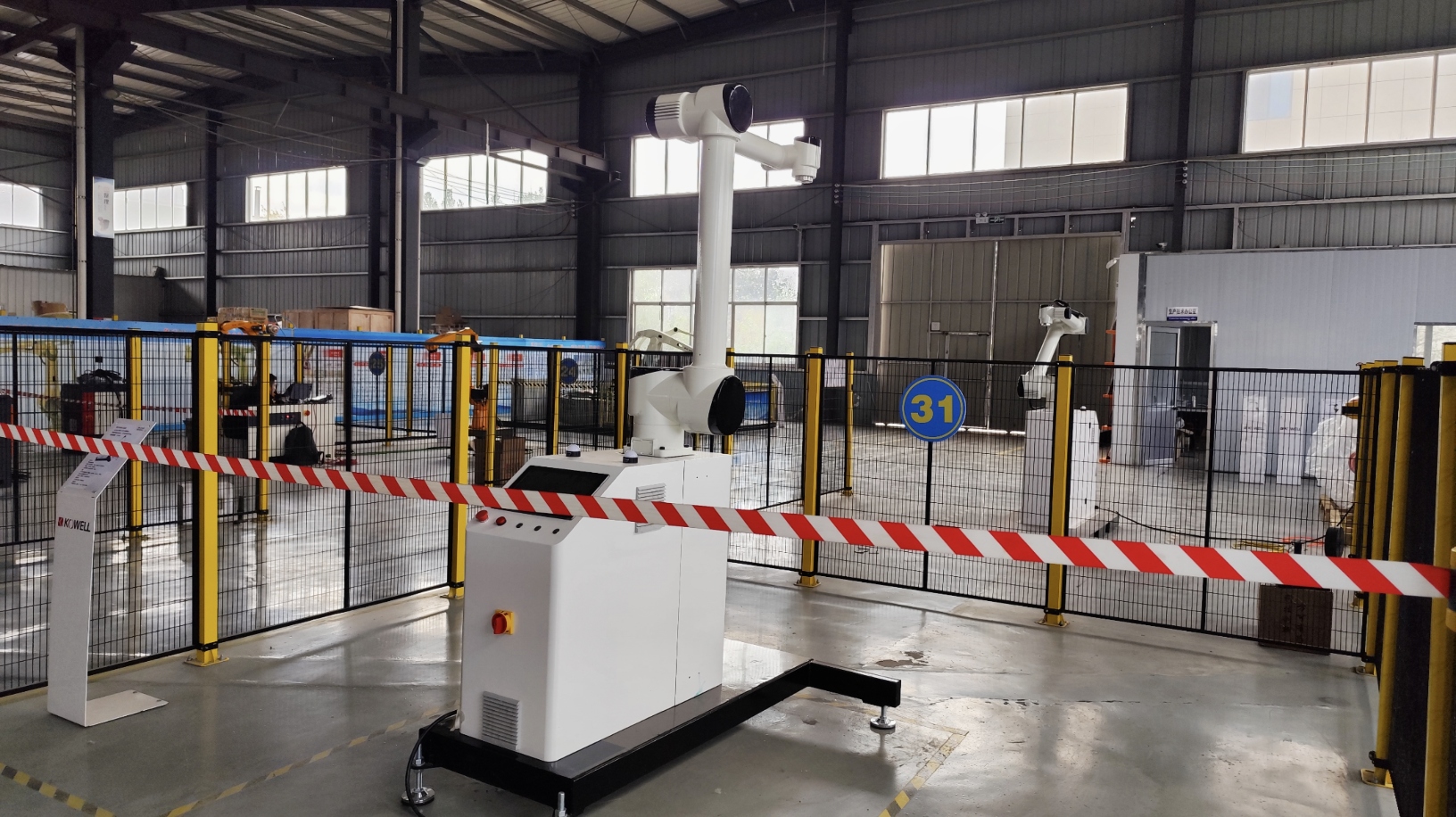
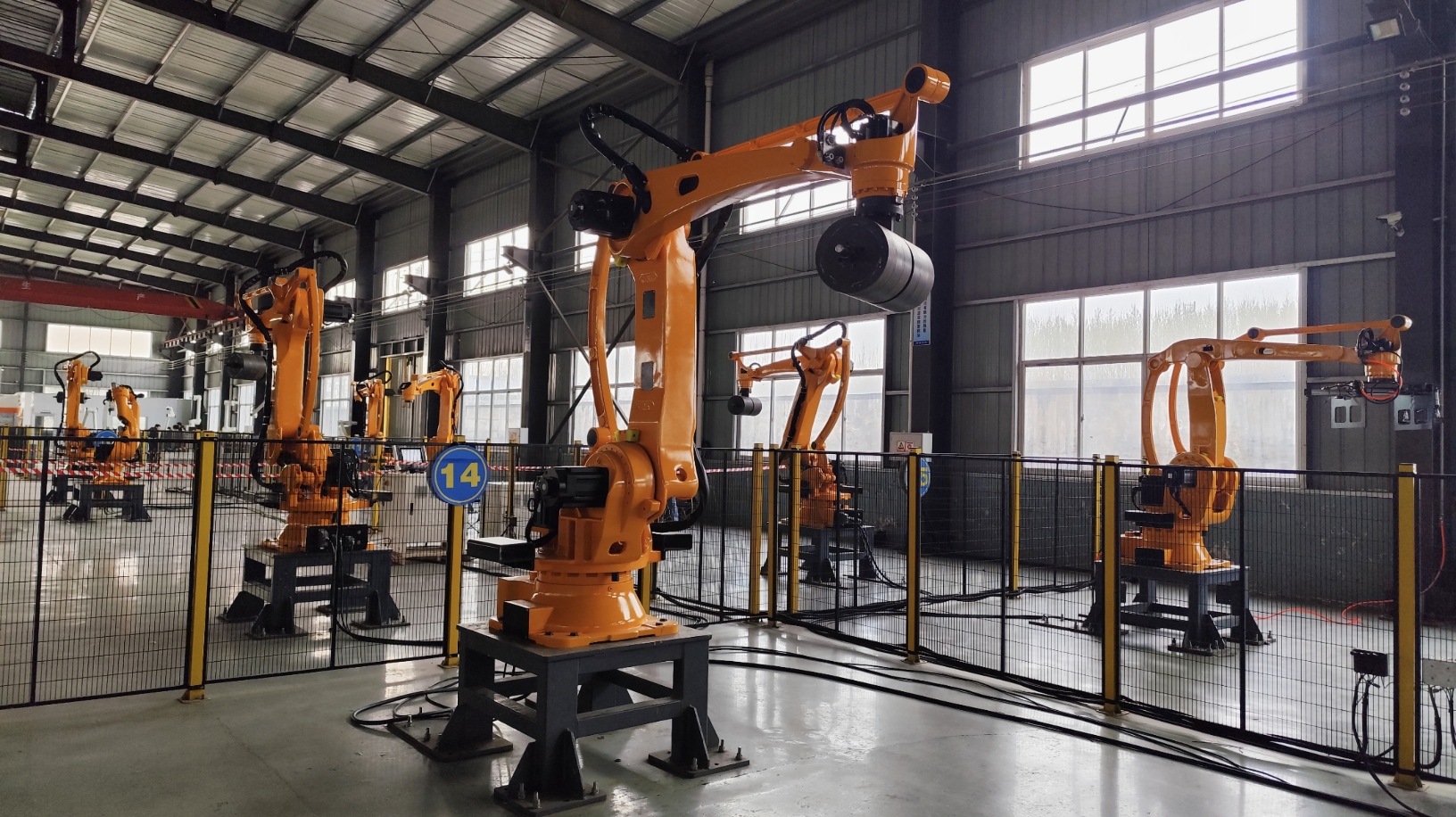
Online Consultation
Hello, the current customer service is offline. You can leave your contact information and the staff will respond to you as soon as possible!


